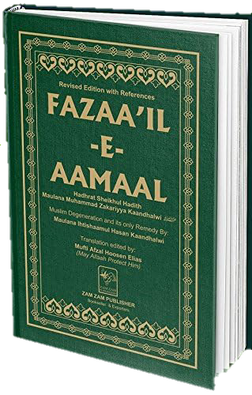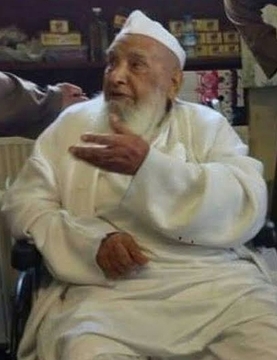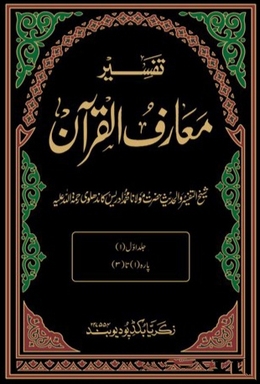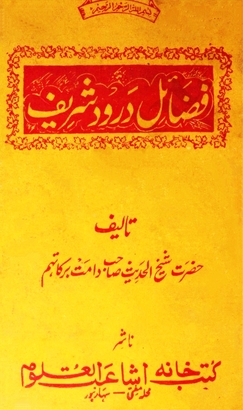
The Deobandi movement or Deobandism is a revivalist movement within Sunni Islam that adheres to the Hanafi school of law. It formed in the late 19th century around the Darul Uloom Madrassa in Deoband, India, from which the name derives, by Muhammad Qasim Nanautavi, Rashid Ahmad Gangohi, and several others, after the Indian Rebellion of 1857–58. They opposed influence of non-Muslim cultures on the Muslim of South Asia. The movement pioneered education in religious sciences through the Dars-i-Nizami associated with the Lucknow-based ulama of Firangi Mahal with the goal of preserving traditional Islamic teachings from the influx of modernist, secular ideas during British colonial rule. The Deobandi movement's Indian clerical wing, Jamiat Ulema-e-Hind, was founded in 1919 and played a major role in the Indian independence movement through its participation in the Pan-Islamist Khilafat movement and propagation of the doctrine of composite nationalism.

Tablighi Jamaat is an international Islamic religious movement focuses on exhorting Muslims to be more religiously observant and encouraging fellow members to return to practising their religion as per the Islamic prophet Muhammad, and secondarily give dawah (calling) to non-Muslims. "One of the most widespread Sunni" islah (reform) and called "one of the most influential religious movements in 20th-century Islam," the organization is estimated to have between 150 and 200 million adherents worldwide, spread over 150 countries, with the majority living in South Asia.

Muḥammad Ilyās ibn Muḥammad Ismā‘īl Kāndhlawī Dihlawī was an Indian Islamic scholar who founded the Tablighi Jamaat Islamic revivalist movement, in 1925, in Mewat province.

Fazail-e-Amaal, authored by Zakariyya Kandhlawi between 1929 and 1964, is a book that primarily consists of treatises from the Fada'il series, originally published in Urdu. Its purpose is to inspire and motivate Muslims in their religious practices by presenting a diverse range of Islamic teachings, stories, and anecdotes. The book's popularity has led to translations in multiple languages, including English and French, establishing it as a major resource for the Tablighi Jamaat, a transnational pietistic movement. Written at the request of Ilyas Kandhlawi, the founder of Tablighi Jamaat, the book was initially named Tablighi Nisab or Curriculum for Tabligh. It is the most popular ongoing publication of Urdu literature in the present era and is extensively read due to its inclusion in the literature of the Tablighi Jamaat. The book's language is appreciated for its simplicity, clarity, and accessibility to readers.
Kandhla is a town, near Shamli City and municipal board in Shamli District in the Indian state of Uttar Pradesh.

Zakariyya Kandhlawi was a mid-twentieth-century traditionalist Sunni scholar and an authority in the study of hadith, also known as Sheikh al-Hadith, hailing from India. He was an influential member and ideologist of Tablighi Jamaat and the author of the Fada'il series, which is a crucial propagation literature for the movement. Born into a family deeply rooted in Tablighi Jamaat and associated with the Deobandi movement, he studied under Mazahir Uloom and eventually became a teacher there in 1917, retiring over half a century later in 1968. Engaging with Sufism, a distinctive feature of the mainstream Indian Ulama, he was a student of Khalil Ahmad Saharanpuri in both hadith and spirituality. Together, they embarked on a ten-year journey to compile Badhl al-Majhud, an explanatory work on Sunan Abu Dawood. Initially published in five volumes, he expanded it to a twenty-volume collection. He made his first trip to Medina with Saharanpuri at a young age, and in 1972, he settled in Medina and continued his missionary work from there until his death. He was buried next to his teacher Saharanpuri at Al-Baqi Cemetery, whose successor he had been named. During his initial stay in Medina, he began working on a commentary on Muwatta Imam Malik, eventually publishing Awjaz al-Masalik over a thirty-year period. This work quickly earned him a reputation for his expertise in interpreting the Maliki tradition. The first edition, published in six volumes in India, was followed by a fifteen-volume second edition, with the first three volumes printed in Cairo and the remaining volumes in Beirut.
Haji Muhammad Abdul Wahhab (Urdu: حاجی راو محمد عبد الوہاب, Ḥājī Muḥammad ‘Abdul-Wahhāb was an Islamic preacher and the emir of Tablighi Jamaat in Pakistan.

Muhammad Yusuf Kandhlawi (1917–1965) was an Indian Islamic scholar who became the second ameer of the Tablighi Jamaat.
Nizamuddin Markaz, also called Banglewali Masjid, is a mosque located in Nizamuddin West in South Delhi, India. It is the birthplace and global centre of the Tablighi Jamaat, the missionary and reformist movement started by Muhammad Ilyas Kandhlawi in 1926.

Muḥammad Manz̤oor Nomānī was an Indian Islamic scholar. Prominent among his written works are Maariful Hadith, Islam Kya Hai?, and Khomeini and the Iranian Revolution.

Zubair-ul-Ḥassanc. was an Indian Islamic scholar and fourth emir of Tablighi Jamaat in India.
Muhammad Saad Kandhlawi is an Indian Muslim scholar and preacher. He is the great-grandson of the Tablighi Jamat founder Muhammad Ilyas Kandhlawi. He heads the Nizamuddin faction of the Tablighi Jamat.
A Tablighi Jamaat religious congregation that took place in Delhi's Nizamuddin Markaz Mosque in early March 2020 was a COVID-19 super-spreader event, with more than 4,000 confirmed cases and at least 27 deaths linked to the event reported across the country. Over 9,000 missionaries may have attended the congregation, with the majority being from various states of India, and 960 attendees from 40 foreign countries. On 18 April, 4,291 confirmed cases of COVID-19 linked to this event by the Union Health Ministry represented a third of all the confirmed cases of India. Around 40,000 people, including Tablighi Jamaat attendees and their contacts, were quarantined across the country.

Hafiz Mohammed Patel was a British Asian imam known for his role in establishing the Tablighi Jamaat movement in the United Kingdom and for founding the Dewsbury Markaz mosque, the headquarters of Tablighi Jamaat in Europe.
Ziya Us Salam is an Indian author, literary critic, journalist and social commentator, who has worked for The Hindu Group since 2000. In addition to serving as the associate editor for magazine Frontline, he also wrote several columns on sociocultural issues and book reviews for the magazine.

Darul Uloom Deoband was established in 1866 in the Saharanpur district of Uttar Pradesh, India, as part of the anti-British movement. It gave rise to a traditional conservative Sunni movement known as the Deobandi movement. The Deobandi Movement has an international presence today, with its full-fledged manifestation in South Africa, a country where the movement was initiated through the Indian Gujarati merchant class. The Islamic education system of the Deobandi movement, as well as the necessary components of social and political organizations such as Tablighi Jamaat, Sufism and Jamiat, are fully functioning effectively in South Africa, as they do in India. Madrasas in South Africa provide Islamic higher education and are now centers for Islamic education for foreigners who are interested in receiving a Deobandi-style education. Many of their graduates, especially from Western countries such as the United Kingdom and the United States, are Western students. Some of South African madrasas are recognized globally, providing fatwa services. South Africa is now known for producing exceptional Islamic literature through translation and compilation. Similarly, the Tabligh Jamaat is a hub in South Africa that spreads throughout South and East Africa. Graduates of South African madrassas spend their time in the path of the Tabligh Jamaat. Through the work of several spiritual personalities of the Deobandis, the tradition of Deoband's Tasawwuf (Sufism) has taken root in South Africa. Among them are Zakariyya Kandhlawi, Masihullah Khan, Mahmood Hasan Gangohi and Asad Madani. South African Deobandi Muslims have many important and influential educational and socio-political organizations that educate the people and play an important role in religious and social activities. Among them are Jamiatul Ulama South Africa and the Muslim Judicial Council.

Maarif al-Quran is an 8-volume interpretation of the Quran written between 1941 and 1982. It was initiated by Idris Kandhlawi and completed by his pupil Malik Kandhlawi. Its purpose was to counter the influence of Western-oriented exegesis trends in South Asia. Idris Kandhlawi's approach to writing this tafsir was rooted in the methodology of his teacher, Ashraf Ali Thanwi's Bayan al-Quran. By following this method, he ensured a systematic and coherent presentation of the Quranic commentary, drawing inspiration from the teachings of the Salaf and the scholarly heritage of Islamic civilization. The tafsir synthesized insights and opinions from renowned commentators throughout history.

The Fada'il series comprises a collection of nine treatises authored by Zakariyya Kandhlawi between the years 1930 and 1965, elucidating the virtues associated with various deeds. The majority of these treatises were composed at the behest of Ilyas Kandhlawi, the founder of Tablighi Jamaat. Their primary purpose was to serve the propagation efforts of Tablighi Jamaat, while also being perused by individuals engaged in their daily circles of education. This series stands as the most widely circulated of Urdu publications, owing largely to its integration within the literature of Tablighi Jamaat and its subsequent translation into numerous languages. Subsequently, the majority of the collective treatises were published under the title Fazail-e-Amaal. The nine treatises encompassed within this series are as follows: (1) The Story of the Companions, (2) Virtues of the Quran, (3) Virtues of Prayer, (4) Virtues of Remembrance (Dhikr), (5) Virtues of Propagation, (6) Virtues of Ramadan, (7) Virtues of Hajj, (8) Virtues of Charity, and (9) Virtues of Sending Blessings upon the Prophet. Abul Hasan Ali Hasani Nadwi said no other literary series has exerted a more profound reformative influence upon the nation than Zakariyya Kandhlawi's Virtues Books.

Zakariyya Kandhlawi was a traditionalist Sunni scholar and an authority in the study of hadith during mid-twentieth-century India. He was also known as Sheikh al-Hadith and was an ideologist of Tablighi Jamaat. He wrote in Arabic and Urdu, and did not copyright his publications. He began writing at the age of 20 while a student. After completing his studies, he became a teacher at Mazahir Uloom in 1917. During this period he collaborated with Khalil Ahmad Saharanpuri on Badhl al-Majhud, which was the foundation of his lifelong study of Hadith. He wrote 103 works, 57 in Arabic and 46 in Urdu. His Fada'il series has been translated into multiple languages and served as resources for the Tablighi Jamaat.

Islam, Youth, and Modernity in The Gambia: The Tablighi Jama'at is an ethnographic account examining the Tablighi Jama'at movement within The Gambia. Authored by Marloes Janson and published by Cambridge University Press in 2013, the book investigates the intricacies of Tablighi members' lives, presenting insights into how the movement shapes established Islamic practices, authority structures, and gender roles. Shortlisted for the 2014 The Thinking Allowed Award for Ethnography by BBC Radio 4 and the British Sociological Association, it is the first full-blown study of the Tablighi Jamaat movement in Africa. Drawing from 12 months of fieldwork in the early to mid-2000s, initiated in the late 1990s, Janson's narrative focuses on the experiences of five members, highlighting the nuanced interplay between modernity, Islam, and youth in the Gambian context. The book emphasizes the movement's resonance with urban youth aged 15 to 35 and its distinctive characteristics in The Gambia, including active women's participation in missionary activities. At its heart, the book thoroughly studies the repercussions of Islamic reform on gender dynamics in The Gambia. Janson characterizes the Jama'at as a youth movement, analyzing how Tablighis redefine identity, social dynamics, and gender roles through practices like missionary tours and teaching/learning sessions.










